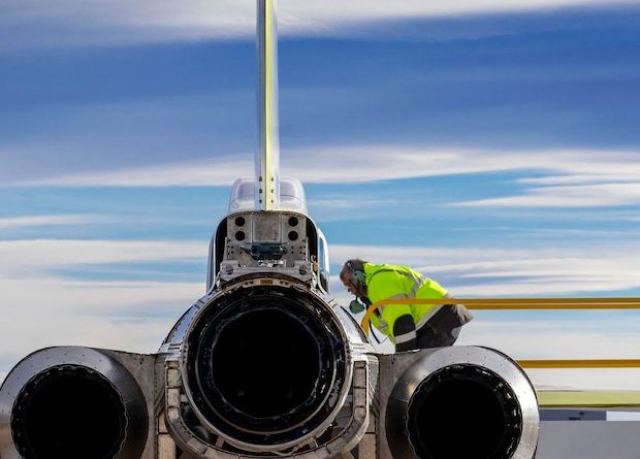The American company Boom Supersonic installed engines on the demonstrator of the supersonic passenger aircraft XB-1 and began testing them. It tests all three power plants at idle in turn and simultaneously, and also checks them in different operating modes.
Boom Supersonic has been developing the XB-1 since the early 2010s. With its help, she is going to test technologies that can then be used in the supersonic passenger aircraft Overture, designed to carry 55-75 passengers.
Such solutions include a streamlined airframe shape with smoothed transitions, an elongated sharp nose and a delta-shaped wing with a very large sweep along the leading edge. All this should reduce the number and intensity of shock waves generated on the glider during supersonic flight.
In 2020, an American company rolled out a reduced demonstrator of a supersonic passenger aircraft. This device is called the XB-1 Baby Boom. Its length is 20.7 meters, the wingspan is 5.2 meters, and the maximum take-off weight is 6.1 tons. The demonstrator is equipped only with a two-seat cockpit.
Boom Supersonic has agreed with Rolls-Royce to jointly develop a new engine for the Overture, but first determine whether the existing powerplants will suit the promising supersonic passenger aircraft. Baby Boom received three J85-15 turbojet engines capable of developing power up to 54 kilonewtons each.
In January, Boom Supersonic announced that it had begun testing engines on the demonstrator of its supersonic passenger aircraft. It tests all three power plants at idle in turn and simultaneously, and also checks them in different operating modes. All this time, the XB-1 is tied to the ramp and does not move from its place.
After checking the engines, the demonstrator will start jogging. It will reach speeds of up to 112 kilometers per hour. Then Baby Boom will go to the Mojave Desert. There he will practice jogging again, but at a higher speed (probably up to 249 kilometers per hour), and will perform the first flight. The developers expect that it will rise into the air at a speed of about 341 kilometers per hour.
In addition to Boom Supersonic, several other enterprises and government organizations are currently engaged in the development of supersonic passenger aircraft. You can read more about the prospects of this direction of aviation in our material "Turn on supersonic" .
Vasilisa Chernyavtseva

